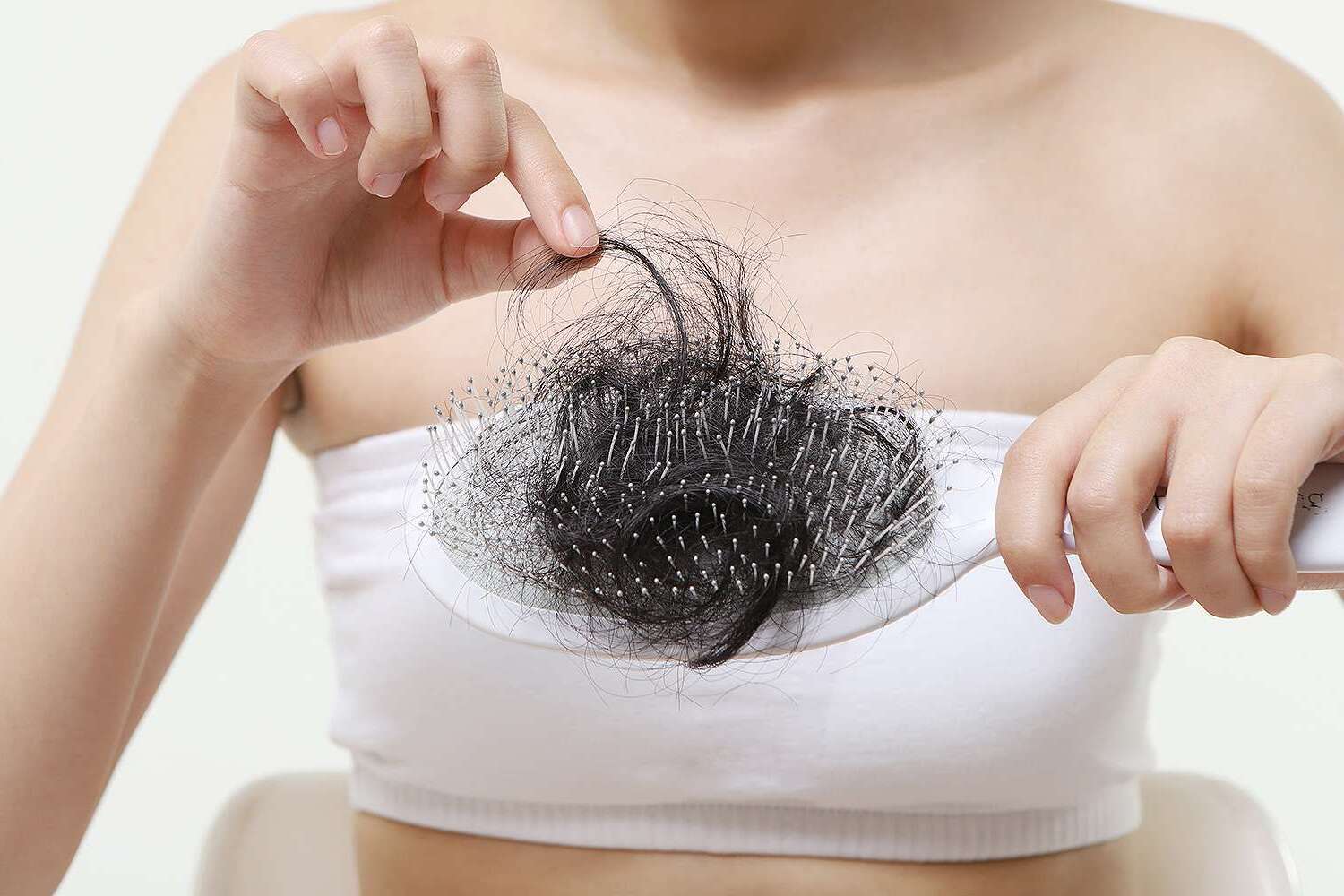
Rapunzel Syndrome might sound like a fairy tale, but it's a real medical condition. Named after the long-haired princess, this syndrome involves a person eating their own hair, leading to a hairball in the stomach. Trichophagia, the act of eating hair, often accompanies trichotillomania, where individuals compulsively pull out their hair. This can cause serious health issues, including blockages in the digestive system. Symptoms might include stomach pain, nausea, and weight loss. Treatment usually involves a combination of medical intervention and psychological therapy. Understanding this condition is crucial for early diagnosis and effective treatment. Let's dive into 40 intriguing facts about Rapunzel Syndrome.
Key Takeaways:
- Rapunzel Syndrome is a rare condition where ingested hair forms a stomach hairball, causing abdominal pain, nausea, and weight loss. Early diagnosis and treatment are crucial for preventing serious complications.
- Preventing Rapunzel Syndrome involves addressing underlying causes, promoting healthy habits, and seeking early intervention and support. Joining support groups and regular check-ups can provide emotional and medical assistance.
What is Rapunzel Syndrome?
Rapunzel Syndrome is a rare medical condition where a person ingests their own hair, leading to the formation of a hairball in the stomach. This can cause various health issues. Let's dive into some fascinating facts about this unusual syndrome.
-
Named After a Fairy Tale Character
The syndrome is named after Rapunzel, a character from a Brothers Grimm fairy tale, known for her long hair. -
Scientific Term
The medical term for Rapunzel Syndrome is trichobezoar, derived from "tricho" meaning hair and "bezoar" meaning a mass found trapped in the gastrointestinal system. -
Hairball Formation
Ingested hair accumulates in the stomach, forming a hairball that can extend into the intestines. -
Psychiatric Disorder Association
Often linked with trichotillomania, a psychiatric disorder where individuals have an irresistible urge to pull out their hair. -
First Documented Case
The first documented case of Rapunzel Syndrome was reported in 1968 by Vaughan et al.
Symptoms of Rapunzel Syndrome
Recognizing the symptoms is crucial for early diagnosis and treatment. Here are some common signs to look out for.
-
Abdominal Pain
Persistent stomach pain is a common symptom due to the hairball causing blockages. -
Nausea and Vomiting
Individuals may experience frequent nausea and vomiting as the body tries to expel the hairball. -
Weight Loss
Unexplained weight loss can occur due to reduced appetite and malabsorption of nutrients. -
Bloating
The presence of a hairball can cause significant bloating and discomfort. -
Constipation
Blockages in the intestines can lead to severe constipation.
Diagnosis of Rapunzel Syndrome
Diagnosing Rapunzel Syndrome involves several medical procedures to confirm the presence of a hairball.
-
Physical Examination
Doctors may feel a palpable mass in the abdomen during a physical examination. -
Imaging Tests
X-rays, CT scans, and ultrasounds are commonly used to visualize the hairball. -
Endoscopy
An endoscope, a flexible tube with a camera, is inserted into the stomach to directly view the hairball. -
Blood Tests
Blood tests can help identify any nutritional deficiencies or infections caused by the hairball. -
Psychiatric Evaluation
A psychiatric evaluation is often conducted to diagnose any underlying mental health conditions like trichotillomania.
Treatment Options for Rapunzel Syndrome
Treatment usually involves a combination of medical and psychological interventions. Here are some common methods.
-
Surgical Removal
Surgery is often required to remove the hairball, especially if it is large or causing severe symptoms. -
Endoscopic Removal
In some cases, the hairball can be removed using an endoscope, avoiding the need for open surgery. -
Medications
Medications may be prescribed to manage symptoms like pain, nausea, and infections. -
Nutritional Support
Nutritional support is crucial to address any deficiencies caused by the hairball. -
Psychotherapy
Cognitive-behavioral therapy (CBT) is often used to treat trichotillomania and prevent future hair ingestion.
Complications of Rapunzel Syndrome
If left untreated, Rapunzel Syndrome can lead to serious health complications. Here are some potential risks.
-
Intestinal Obstruction
The hairball can cause a blockage in the intestines, leading to severe complications. -
Perforation
The hairball can erode the stomach or intestinal lining, causing perforation and infection. -
Malnutrition
Nutrient absorption can be severely affected, leading to malnutrition and related health issues. -
Infections
The presence of a foreign body in the stomach can lead to bacterial infections. -
Psychological Impact
The condition can have a significant psychological impact, leading to anxiety, depression, and social isolation.
Prevention of Rapunzel Syndrome
Preventing Rapunzel Syndrome involves addressing the underlying causes and promoting healthy habits. Here are some preventive measures.
-
Early Intervention
Early diagnosis and treatment of trichotillomania can prevent hair ingestion. -
Behavioral Therapy
Behavioral therapy can help individuals manage the urge to pull out and ingest their hair. -
Support Groups
Joining support groups can provide emotional support and coping strategies. -
Parental Guidance
Parents should monitor their children's behavior and seek medical advice if they notice hair-pulling or ingestion. -
Regular Check-ups
Regular medical check-ups can help detect any early signs of the syndrome.
Interesting Facts about Rapunzel Syndrome
Here are some intriguing facts that highlight the uniqueness of this condition.
-
Rare Condition
Rapunzel Syndrome is extremely rare, with fewer than 100 cases reported in medical literature. -
Gender Prevalence
It predominantly affects females, particularly young girls and adolescents. -
Cultural References
The syndrome has been referenced in various TV shows and movies, raising awareness about the condition. -
Historical Cases
Historical records suggest that bezoars, including hairballs, were once believed to have magical properties. -
Medical Curiosity
The syndrome continues to be a subject of medical curiosity and research due to its rarity and complexity.
Real-Life Cases of Rapunzel Syndrome
Real-life cases provide valuable insights into the condition and its impact on individuals. Here are some notable examples.
-
Young Girl in India
A 15-year-old girl in India had a 1.5 kg hairball removed from her stomach, highlighting the severity of the condition. -
Teenager in the UK
A 16-year-old girl in the UK underwent surgery to remove a hairball that extended into her intestines. -
Case in the USA
A young woman in the USA had a hairball removed after experiencing severe abdominal pain and weight loss. -
Medical Journal Reports
Numerous case reports in medical journals document the diagnosis, treatment, and outcomes of individuals with Rapunzel Syndrome. -
Awareness Campaigns
Awareness campaigns by medical professionals and organizations aim to educate the public about the syndrome and its prevention.
Final Thoughts on Rapunzel Syndrome
Rapunzel Syndrome, though rare, is a serious condition where hairballs form in the stomach and intestines. Named after the fairy tale character, it often results from trichotillomania and trichophagia. Symptoms include abdominal pain, nausea, and weight loss. Early diagnosis and treatment are crucial to prevent complications like intestinal blockage or perforation. Treatment usually involves surgery to remove the hairball and therapy to address the underlying psychological issues. Awareness and understanding of this condition can help in early detection and better management. If you or someone you know shows signs of this syndrome, seek medical advice promptly. Remember, mental health is just as important as physical health. Stay informed, stay healthy.
Frequently Asked Questions
Was this page helpful?
Our commitment to delivering trustworthy and engaging content is at the heart of what we do. Each fact on our site is contributed by real users like you, bringing a wealth of diverse insights and information. To ensure the highest standards of accuracy and reliability, our dedicated editors meticulously review each submission. This process guarantees that the facts we share are not only fascinating but also credible. Trust in our commitment to quality and authenticity as you explore and learn with us.


